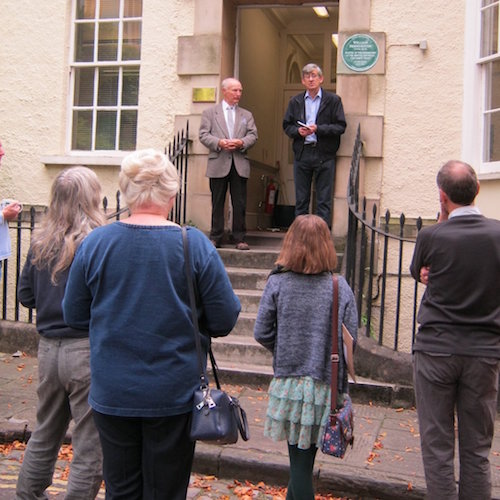William Pennington (1740-1829)
William was born in Bristol England where his father was a Custom Officer at what was then a busy inland port. This was not surprising as his distant relative, Sir Joseph Pennington MP was Commissioner of Excise for the British Empire, a post he held in succession to his grandfather. In due course William’s brother James succeeded his father as Custom Officer at Bristol but William, who seems to have been well educated, joined the Guards. In 1764 he was appointed colonial Customs Officer for the port of Brunswick, which at that time was North Carolina’s leading port. He travelled out to America with William Tryon, a Lieutenant Colonel in the Scots Guards who had been appointed Lieutenant Governor of the colony. The two soon gained a high regard for eachother and were to remain friends for life.
On their arrival they found themselves facing colonists rebelling against the Stamp Act of 1765. This was to lead to the American War of Independence ten years later. In the interim William Pennington, though facing increasing hostility, acquitted himself well and remained at his post until finally driven from office in February 1776. He now fled to New York where he joined the British forces under William Tryon, now promoted General, who had succeeded Lord Dunmore as Governor. After the final British defeat at the Battle of Yorktown William Pennington took ship for England. During the long voyage home he befriended another colonist who was retuning to England in the hope of finding his lost relatives and leaving them his wealth. Sadly he fell ill on the voyage and William nursed him in his final days. Before he died at the man rewrote his Will in Pennington’s favour. However on arriving in England William, being a man of proven honesty, destroyed the new Will and sought out the beneficiaries of the original and put them in possession of all the man’s property.
It is likely that when he arrived home William, having lost everything when he fled N Carolina, thought of himself as returning to a wealthy family. Sadly trade in Bristol had been drastically affected by hostilities with America and France and he was now a poor man. However there was strong public support for loyalists returning to England and William, supported by Tryon, made a successful claim to the Loyalist Claims Commission for a small pension of £60 p.a.
In 1785 in an effort to regain its reputation as a centre for entertainment, the Bristol Hotwell followed the example of the city of Bath and established a “Master of the Ceremonies”. William was appointed to public acclaim. (More than one account describes him as being elegant and witty and many Americans as well as British had left the American colonies at the outbreak of the War of Independence and settled in Bristol). William was now responsible for organising the Hotwells programme of public breakfasts, balls, cotillions, country dances and other entertainments during the Hotwell’s season from May to September each year. This he would do for the next 30 years.
One of William’s first acts as Master was to publish “Rules of the Hotwell” to ensure that all who attended behaved with decorum, and these were soon copied by Bath. In 1791, now enjoying a comfortable income, William learned of the distress of Penelope Weston one of Mrs Thrale/Piozzi’s intellectual circle which included Hannah More, Anna Seward, and Dr Johnson. Through no fault of her own, Penelope and her mother had been brought to financial ruin by the criminal acts of her wayward brother. Learning of this, William, who had met her when he first arrived in Bristol, proposed marriage though he was 52 and she 41 years of age. After some hesitation, but encouraged by Mrs Piozzi, she accepted his offer and they lived happily in Dowry Square for the remaining years of their lives. When a frail Mrs Piozzi returned to Bristol in 1821 Mrs Pennington visited her almost daily until she died, and then wrote a moving obituary which was widely published. Penelope Pennington died in 1828 and William the following year. Both had memorial plaques placed in the Dowry Chapel which were lost following its demolition in 1872, and the site of their final resting place remains unknown.
On October 3rd 2015 a plaque organised and paid for by the Clifton and Hotwells Preservation Society was unveiled at 12 Dowry Square, Hotwells Bristol where William and his wife lived from 1813 to 1823.
